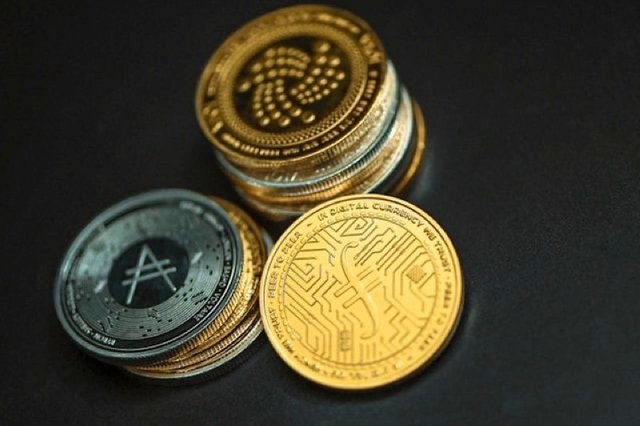Understanding Layer 0 in Blockchain

In recent months, there have been several announcements of layer 2 and even layer 3 applications for various blockchains. But all of these announcements can leave individuals wondering, what is layer 0? And does it still have use in blockchain?
Layer 0 is where it all began, and in this article, we will take a deep dive to ensure you understand every aspect of it. So, if you want to learn about Layer 0, read on.

What is Layer 0?
Layer 0 is basically the base layer protocol of the blockchain, or network framework, which allows the blockchain to operate. It’s the first and most basic of the blockchain protocols.
While layer 0 might not sound important, it is basically the reason blockchain even exists and can be scaled. Layer 0 is where the servers, hardware, nodes, and network are for most blockchains.
If you’ve ever heard the terms proof-of-work or proof-of-stake, then you already know about layer 0. Layer 0 is where consensus mechanisms live, as well as encryptions, which makes what occurs over a blockchain network private.
It’s important to understand, however, that blockchains don’t need a layer 0 to operate. Some blockchains, most notably Bitcoin and Ethereum, operate on layer 1 protocols, and store all the things that would normally be stored on layer 0 there. Layer 0 is specifically a portion of blockchain infrastructure that allows for interoperability.
Why is Layer 0 Important?
As you can assume, layer 0 is important because it provides the foundation for a blockchain network, but that isn’t all, as layer 0 is also where developers usually have to develop in order to improve a network’s scalability.
Just like with building a tower, if you only have a small base, you can’t build up as high as when you would have a larger base. Improving on and adding to layer 0 is the number one way that blockchains can scale without having to disrupt current functionality. Blockchains without a layer 0 are often difficult to scale for this reason.
Another important aspect of layer 0 is that it allows interchain connectivity. Think of it this way: When you build something with Legos and start with one of those large flat boards, almost any Lego you add will hook to it. But as you build up, you might find certain parts of your creation coming to a point where certain blocks will no longer attach.
It’s the same with layer 0. Layer 0 allows the ultimate connectivity both with dApps on the blockchain, as well as with other blockchains. But as the blockchain is built out (or up) certain features no longer work on certain platforms. So, when developers are having an issue with a certain aspect of a blockchain, they often go back to layer 0 to see what went wrong and to improve interconnectivity with other blockchains.

How Does Layer 0 Work?
Layer 0 functions using basic information validation techniques, which we also referred to as consensus mechanisms above. These validations are often simple, and don’t perform very complicated tasks.
Native tokens can also function as a consensus mechanism on layer 0, while also encouraging users to become involved in a particular blockchain. Since staking can also occur at level 0, it makes sense that the native tokens would exist here as well.
It’s important to note that dApps, while they may seem like they belong on the base layer, are actually part of layer 1 blockchain.
What Are Some Layer 0 Blockchains?
Are you wanting to invest in some Layer 0 blockchains? Below we have listed a few projects that exist in the Layer 0 space.
1. Cosmos
Cosmos is the layer 0 portion of several different blockchains. In fact, you may have already heard of one of your favorite projects being built on it. Cosmos offers developers lots of scalability and several software development kits that make it easy to expand upon.
Related: The Cosmos (ATOM) 101 Cryptocurrency Guide
2. Avalanche
Avalanche is another popular layer 0 blockchain, which was built for speed. With unique consensus mechanisms native to the platform, Avalanche can process several transactions at the same time. Similar to Cosmos, Avalanche is also customizable, though they don’t offer the same development kits as Cosmos does.
3. Polkadot
Polkadot is a very popular layer 0, which functions via a sharding mechanism. Sharding is a process used to split or distribute transactions and run them simultaneously in order to offer a high output. There are several famous blockchain projects built on the Polkadot layer 0.
What Are the Other Layers in Blockchain?
As you can see, layer 0 is the base level in blockchain, and it can be built upon by engineers to solve complex problems in society. Layer 0 is basic, but broad, and it paves the way for other layers mentioned below.
Layer 0: The base technology of an interoperable blockchain
Layer 1: The layer above layer 0, still basic, but increased functionality like dApps available. Bitcoin, Ethereum, and Cronos are all layer 1 blockchains, meaning they are still basic but don’t have the interoperability enjoyed by layer 0 blockchains.
Layer 2: Scaling solutions which are usually built to increase on layer 1 designs. The Bitcoin Lightning Network is a popular layer 2 solution, as is the Ethereum EigenLayer.
Layer 3: The current top layer in blockchain which usually contains wallets, games, and other inventions which improve the blockchain experience.
Related: The Ethereum EigenLayer: Ethereum Restaking Protocol
Overall, layer 0 blockchains are a complex yet important aspect of blockchain networks, as they dictate whether or not a blockchain will be able to scale and interoperate with other blockchains with ease.
While we wish that Ethereum and Bitcoin had been built on layer 0, they were not, though Ethereum still has active engineers working to scale the platform without a layer 0. Bitcoin will likely forever be a layer 1 project.
Either way, if you are looking to invest in a blockchain project that can truly scale, a layer 0 project may be worth a second look.
You May Also Enjoy: Bitcoin Scalability Issues
This article was brought to you by the Crypto Games on MintDice - choose from 1000s of games today!. Originally posted to the MintDice Blog.